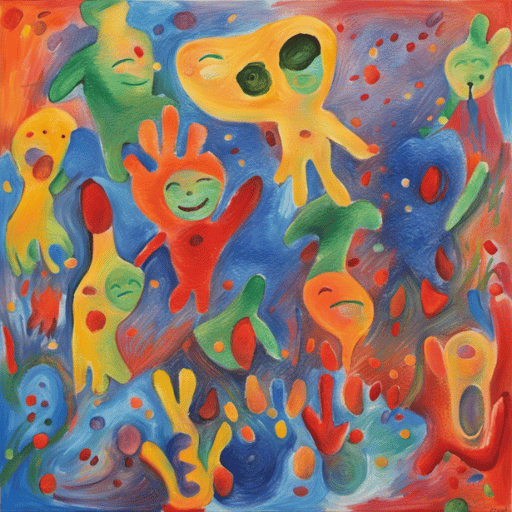A Story Book For Children In Bangladesh About Dystonia
Once upon a time, in the beautiful land of Bangladesh, there lived a little girl named Ayesha. Ayesha loved to play and explore the vibrant streets of her neighborhood in Dhaka. She would often visit the bustling markets, filled with colorful saris and delicious street food.
But one day, something strange happened to Ayesha. She woke up and found that her body was not moving the way she wanted it to. Her arms and legs felt stiff and it was hard for her to walk or even hold her favorite toy, a tuktuk made of clay.
Ayesha’s parents took her to the local doctor, who explained that she had a condition called Dystonia. Dystonia was like a little gremlin that made her muscles tighten and twist in ways she couldn’t control. The doctor assured Ayesha that she was not alone and that many children in Bangladesh had this condition too.
Ayesha was a brave little girl, and she didn’t let Dystonia stop her from enjoying life. She decided to name her Dystonia gremlin “Babu,” which means “little brother” in Bengali. Babu would sometimes make her arms and legs move in funny ways, but Ayesha learned to laugh and make the best of it.
Ayesha’s friends in the neighborhood were very understanding and supportive. They would play games that didn’t require much movement, like storytelling or drawing beautiful rangolis on the ground. They even created a special game called “Dystonia Dance,” where they would all move their bodies in silly ways, just like Ayesha.
One day, Ayesha’s school organized a big event called the “Dystonia Awareness Fair.” People from all over Bangladesh came to learn about Dystonia and support children like Ayesha. There were colorful banners, music, and even a puppet show that explained the condition in a fun way.
Ayesha felt proud to be a part of this event. She stood on the stage and shared her story with everyone. She told them about Babu, her mischievous Dystonia gremlin, and how she had learned to embrace her condition with a smile.
As Ayesha finished her speech, the crowd erupted in applause. People were inspired by her bravery and determination. They realized that Dystonia didn’t define Ayesha or any other child with the condition. They saw that inside every child, there was a spark of joy and resilience, just waiting to shine.
From that day forward, Ayesha became a symbol of hope for children with Dystonia in Bangladesh. She continued to spread awareness and encourage others to embrace their differences. Ayesha’s story taught everyone that no matter what challenges we face, we can always find strength within ourselves and support from our community.
And so, every night, as Ayesha lay in bed, she would close her eyes and imagine a world where Dystonia was understood by all. A world where every child could dance, play, and dream, regardless of their condition. And with that beautiful thought, Ayesha drifted off to sleep, knowing that she was making a difference, one smile at a time

